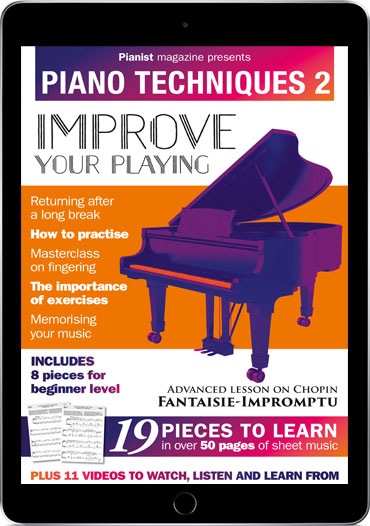Concert pianist Robert Estrin talks through how to deal with having small hands as a piano player
Believe it or not, this is a question that is dear to my heart. I don’t know if any of you have noticed, but I have small hands.
This was a problem for me growing up and working on advanced repertoire. I was learning music that required reaching an octave. Yet, my hands could barely reach. I was only able to achieve this by reaching around the sides of keys as opposed to playing from above them.

© Robert Estrin
If you are learning to play the piano and your hands are too small to reach an octave, you will be at some disadvantage for playing repertoire that demands a big reach. However:
It’s not impossible to approach even pieces that require playing notes far beyond your reach
I worked with Jake Clayton, who was a 10-year-old pianist at the time, who had trouble reaching an octave. But, you would never tell by the way he played Mozart Concertos, as well as demanding works of Chopin; he managed just fine!
Jake’s hands eventually grew bigger. Mine, on the other hand, are pretty much stuck where they are! At this point in my life, I have no trouble reaching an octave. But when I get into playing music with 10ths and 11ths, it requires a bigger reach then I can manage. You probably wonder if I have to leave out notes. Actually, no!
Pianist Mark Tanner gives detailed advice about navigating leaps and stretches inside 104 of Pianist, which you can download here
The secret is: learning how to break chords very quickly using the pedal
The difference in sound is almost imperceptible when you quickly break chords you can't reach, and catch the notes on the pedal. It’s not very difficult, and anyone can learn how to achieve this.
While there may be disadvantages to small hands, there are also tremendous benefits to having small hands for playing the piano. Believe it or not, some people have such large fingers, they don't fit between black keys. So, they have to play on the edge of keys as opposed to the inside near the fallboard which presents a big challenge having to travel in and out of the keyboard to negotiate both white and black keys. This isn’t a problem for people with small hands since they can play at the point at which black and white keys meet. In fact:
People with smaller hands have an advantage in being able to play quickly and lightly on the piano
The most important part of playing the piano is achieving the sound you imagine. With practice, you can play the piano with small hands. Everyone is built differently. You will find things that other people struggle with may come very naturally to you, and vice versa. So, you can enjoy the benefits of having smaller hands while mitigating any weaknesses by learning how to break chords that require stretches beyond your reach.
Watch Robert’s lesson on playing with small hands below.
Want to keep learning? Our Piano Techniques 2 digital special is the ideal learning resource, no matter what level you are at. Enjoy over 50 pages of sheet music, expert playing articles, advice on returning to the piano after a long break, and read our exclusive interview with piano superstar Yuja Wang.
DOWNLOAD PIANO TECHNIQUES 2 HERE
Keep in touch with Robert Estrin below:
Website: www.LivingPianos.com
Phone: 949-244-3729
Email: [email protected]








